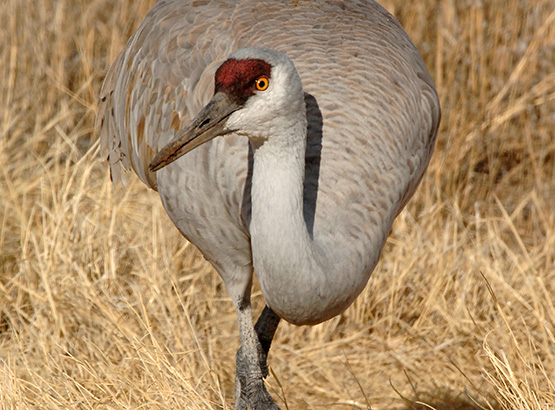Sandhill crane
A portion of three distinct populations of sandhill cranes winter in Arizona. Cranes from both the Rocky Mountain and mid-Continent populations winter in the Sulphur Springs and Gila River valleys of southeastern Arizona. Sandhills from the Lower Colorado River Valley population winter along the lower Colorado River.

About
Wintering areas selected by sandhills feature shallow water roosting areas with low or no vegetation; playa lakes and sandbars along shallow/braided rivers are preferred. Cranes winter in close proximity to harvested grain fields, corn is preferred. In mid to late February cranes begin their return migration to nesting areas.
Cranes leave roosting areas in early morning, usually about sunrise, to fly to feeding areas, where they spend three to four hours. During midday the cranes return to the roost, or go to nearby loafing areas, which can be grasslands or wetlands. In the late afternoon cranes sometimes make short visits to feeding areas before returning to the roosts.
Behavior
Sandhill cranes in the western United States nest in high elevation shallow marshes and wet meadows. Sandhills do not nest until they are four to five years old and typically have very poor success the first couple of years. Typically, cranes lay two eggs, but only about 1/3 of the successful nesters are able to raise two young. In dry years, when wetlands shrink, predators, especially coyotes, take a heavy toll on the flightless young.
Depending on habitat conditions sandhills begin to congregate in local agricultural areas, called pre-migration staging areas, in late August. Migration to wintering areas begins in September. Cranes typically migrate in a few long, high altitude flights stopping at traditional stopover areas.

Our Mission
To conserve Arizona’s diverse wildlife resources and manage for safe, compatible outdoor recreation opportunities for current and future generations.
Hunt Regulations
Rules and regulations for hunting in Arizona.
Regulations for spring hunts, fall hunts and pronghorn, elk hunts.
